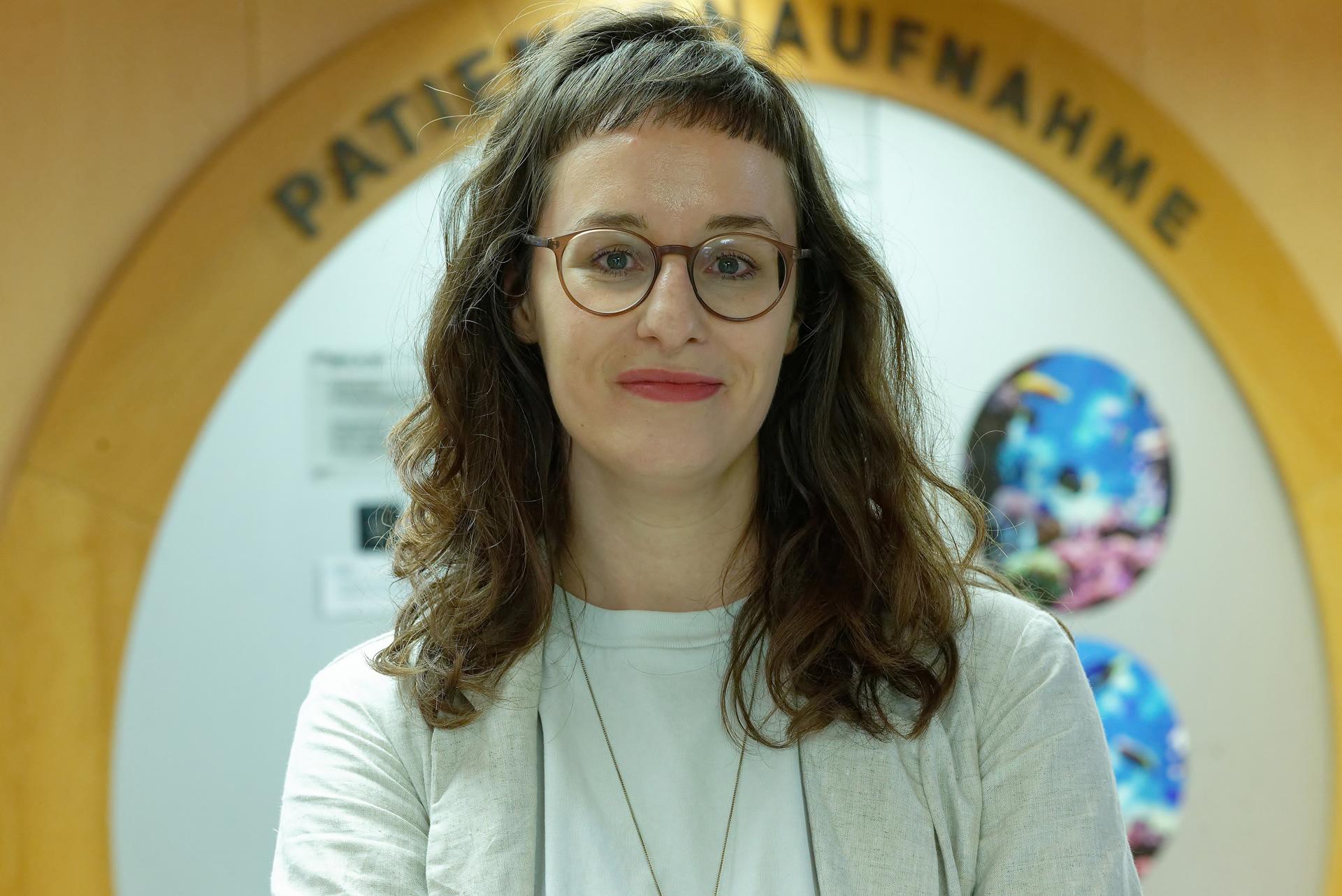The expert on pain in children

Chronic pain in children was not taken seriously for a long time. And greater awareness is still needed today. Psychologist Helen Koechlin's research is helping with this.
Helen Koechlin sits at the bistro table in the Zurich station concourse. There is hardly any other place where life pulsates louder than in the heart of the city: air hammers bang, trams screech, commuters' shoes clack over the stone floor in quick time, a group of children jump around. If they had a headache, it would not be a pleasant place to play. Koechlin explains: "In fact, about a quarter of all children and adolescents suffer from chronic pain. Most people are surprised to hear that. Pain lasting longer than three months is more likely to be associated with adults."
Chronic pain also occurs in children, for example after an operation or an accident. The complaints are then a symptom of an underlying disease. Often, however, it remains unclear what exactly has triggered the pain and how it developed. In such cases, the pain itself is the disease and is then called chronic primary pain. Abdominal pain, headaches or aching muscles and bones are most common in childhood and adolescence. "For children and adolescents, constant pain is a particular hindrance to everyday life, as they should be concentrating on their schooling and social and emotional development," says Koechlin. "Anxiety and depression then often occur at the same time. New studies even show that chronic pain in adolescents significantly increases the risk of first-time onset of suicidality." And if children and adolescents already have chronic pain that is not treated appropriately, it often persists into adulthood.
Psychologist and pain expert Koechlin is a research group leader at the University Children's Hospital Zurich and senior assistant at the University of Zurich. After originally focusing primarily on emotions, she started becoming interested in pain during her PhD, when she spent a year and a half doing research at Boston Children’s Hospital, an affiliate of Harvard Medical School. "The topic fascinated me because it is so multi-layered and interdisciplinary," she says.
Newborns operated on without anaesthesia
Helen Koechlin's field of research is rather new, she tells us, and many young people therefore have difficulties finding effective treatments. However, this is also due to the inglorious history of the field: as late as the 1980s, premature babies and newborns were operated on without anaesthesia. "It was thought that premature babies don't feel pain because their nervous system is still underdeveloped," says Koechlin. What is more, "until the 1980s, the belief persisted that children and adolescents also experience less pain. This goes back in part to Darwin, who regarded children as inferior adults." It was not until 1986, when prematurely born Jeffrey Lawson died after major surgery without anesthesia and his mother – supported by researchers and clinicians – went public, that awareness slowly began to grow.
So the field emerged relatively late out of a niche topic. This is still noticeable today: chronic pain continues to be primarily associated with older people. Moreover, adults are more articulate compared to small children who can barely advocate for themselves. For this reason, they often do not receive adequate pain relief, especially if no clear organic cause can be found. "However," says Koechlin, "research has made great advances in recent years.”
Improving information flow
Koechlin is conducting several projects on the topic with the support of the Swiss National Science Foundation. In one study, she found that research results do not necessarily directly improve the lives of families: "There is a big gap between what is known today and outreach into the lives of those affected." The parents who took part in this study reported their despair at not knowing what was wrong with their child, what they could do and who could help them. The flow of information from research to practice functions poorly. "Early interdisciplinary treatment would make sense, including physiotherapy or psychotherapy, for example." Such treatment supports children and young people in improving the four S's: school, sleep, sport and social life. As a result, the pain often improves as well. "At the moment, it takes an average of 24 months for a child to attend a specialised pain consultation for the first time." This hardly comes as a surprise if you consider the results of a survey of Swiss paediatricians that Koechlin conducted: the majority had very little experience when it came to treating chronic pain and did not feel confident about it. "If you want to rectify this, an important place to start is the study of medicine. Plus more articles in specialised journals of medical associations, more courses and workshops... time will tell what works best. Hopefully my research will help improve knowledge transfer."
Koechlin's current research project focuses on longer-lasting pain that develops or intensifies after surgery. Around 28 per cent of all children and adolescents who undergo surgery suffer from it. Koechlin now wants to gain clarity about which factors increase or decrease the risk of acute pain becoming chronic after surgery. A longitudinal study is intended to contribute to the early identification and support of children and adolescents with a high risk of chronified pain in the future.
Senior assistant Helen Koechlin passes by here at Zurich main station when she commutes from Basel to her office at the Children's Hospital: "If you were to take a spinal X-ray of everyone in this hall, most of them would probably have minor signs of wear and tear. And yet not everyone has back pain. Pain is subjective, but real." She wants parents, teachers and doctors to take chronic pain seriously in every case. "Even when no clear organic cause can be found."